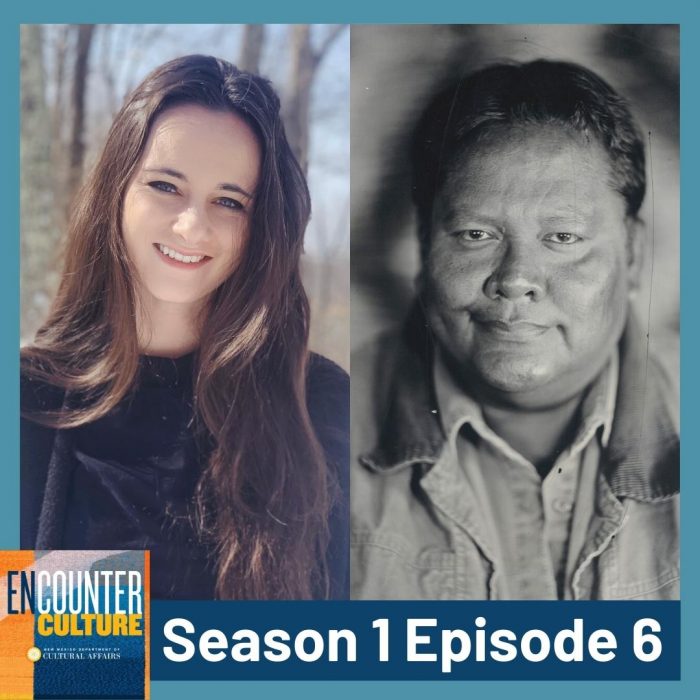From technological innovations to societal attitudes, a lot has changed in the last twenty years. As evolutionary processes go, the gallery-wide refresh of the celebrated permanent exhibition Here, Now and Always (HNA), which opened at the Museum of Indian Arts & Culture in 1997, offers exciting opportunities for greater collaboration with the Southwest’s Native peoples and vibrant new storytelling techniques.
Host Charlotte Jusinski chats with Tony Chavarria, Curator of Ethnology at MICA/Laboratory of Anthropology, and Curatorial Assistant Lillia McEnaney about the tangible and conceptual transformations. The trio also explores the history of museums as Euro-American colonial institutions and their future role as inclusive cultural facilitators.
From the moment it opened, HNA was groundbreaking. “It was a unique exhibition, especially for its time, because it was an exhibition that featured and relied heavily on native voice,” says Tony. That voice, essential to any authentic presentation, is (still) too often left out of standard interpretations at other institutions.
HNA didn’t simply include a few examples; it wove a rich Native narrative by Native peoples through every element. “Native voice actually went into much of the planning of the exhibition. [ ] The group of different curators, advisers, the Indian advisory panel––which also serves the museum in other contexts––were all involved in both selecting objects, writing about objects and interpreting objects as well,” Tony says.
Twenty years later, the museum’s commitment to tribal collaboration is stronger than ever. The revitalized exhibit continues its legacy of connecting ancestor to descendant, first-person storyteller with visitor. HNA utilizes ancient artifacts and modern pieces, such as the traditional Laguna dress that Deb Haaland wore for her swearing in as the United States secretary of the interior.
These state-of-the-art interactive displays are designed to emphasize the fluid nature of Native life. “You can add some more of those things [ ] that engage younger audiences into the museum to help enhance the learning experience,” says Tony of the bells and whistles planned for the space.
A revamped Here, Now and Always will broaden the visitor experience, immersing them in a vibrant, living culture. Tony and Lillia also hope that the exhibit will provoke additional conversations––about how we learn, how we listen, and how we confront colonization so as not to repeat mistakes from the past. “It’s more important than ever,” Lillia says, “for non-Native folks, especially, to understand the Indigenous histories of the lands we all live in and occupy.”
Take a virtual tour of the new exhibit: MIAC: HNA Gallery. Plan your visit to the museum: Museum of Indian Arts & Culture.
Credits:
Encounter Culture, a production of the New Mexico Department of Cultural Affairs, is produced and edited by Andrea Klunder at The Creative Impostor Studios.
Hosted by Charlotte Jusinski
Technical Director: Edwin R. Ruiz at Mondo Machine
Recording Engineer: Kabby at Kabby Sound Studios in Santa Fe
Executive Producer: Daniel Zillmann
Theme Music: D’Santi Nava

